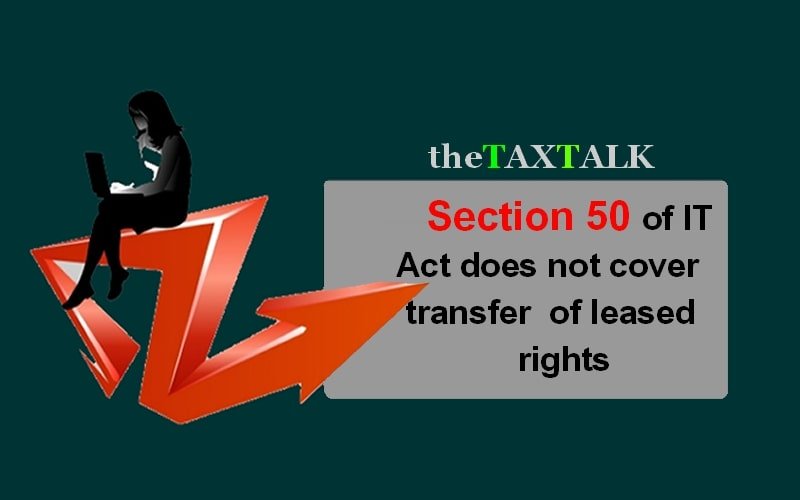![]()
Section 50 of IT Act does not cover transfer of leased rights
The Income Tax Appellate Tribunal (ITAT) has held that Section 50C of the Income Tax Act covers only capital asset being land or building or both and not the transfer of leasehold rights in land and building.
This ruling was given by the ITAT in the Noida Cyber Park (P.) Ltd. v. Income Tax Officer, Ward-18(4), New Delhi case.
Brief facts
The Appellant company for the assessment year under consideration, filed a return of income declaring an income of Rs. 14,38,060 under the normal provisions of the Act whereas the tax was finally paid in terms of ‘Book Profit’ determined at Rs. 10,53,55,713 as per Section 115JB of the Act.
The return of income so filed by the assessee was subjected to scrutiny assessment, whereby the only point of difference between the assessee and the Revenue was with regard to the computation of Capital Gains on sale of a part of its building in Tower C and D of the Logix Cyber Park located at Noida.
Since the consideration received by the assessee as a result of the transfer of the six properties in question was lower than the value adopted by the ‘Stamp Valuation Authority’ for the purpose of payment of stamp duty, the Assessing Officer required the assessee to show cause as to why Section 50C of the Act be not invoked for computation of Capital Gains.
The assessee contended that Section 50C is not applicable in its case as “capital asset” transferred does not fall within the purview of Section 50C. Section 50C covers a “Capital Asset” being “land or building or both” whereas assessee had transferred merely leasehold rights in the property.
The assessee further contended that expression “land or building or both” used in Section 50C would not include leasehold right in land or building or both. The assessee submitted that it had taken land on lease for a period of 90 years and constructed a tower out of which a portion had been sublet. What had been transacted was the only leasehold right in the land or building, which was quite distinct from the ‘capital asset’ referred to in Section 50C.
Although the assessee resisted the action, the Assessing Officer did not accept any of the points raised by the assessee, and, instead, he treated the value assessed by the stamp valuation authority as the full value of consideration, for the purposes of computing capital gains, and accordingly, the difference between the consideration stated in the sale deeds and the value adopted by the stamp valuation authority for payment of stamp duty i.e. Rs. 2,40,91,67,743 was added to the returned income.
Aggrieved with the assessment so made, the assessee carried the matter in appeal before the Commissioner of Income Tax(A) on varied grounds of law and facts. The CIT (A) dismissed the appeal of the assessee in toto and confirmed the addition made by the Assessing Officer.
The assessee approached the ITAT for relief.
ITAT
The Delhi ITAT held that the expression ‘land or building’ in its coverage is quite distinct from the expression ‘any right in land or building’. The legislature, in its wisdom, has used the expression ‘land or building or both’ in section 50C, and not the expression ‘any right in land or building’. Therefore, the express use of one expression would exclude the other. The Hon’ble Supreme Court has supported this legal premises in the case of GVK Industries Ltd. v. ITO [2011] 197 Taxman 337 (SC). Thus, transfer of leasehold rights does not warrant invoking of Section 50C as the said property is not of the nature covered by Section 50C.


